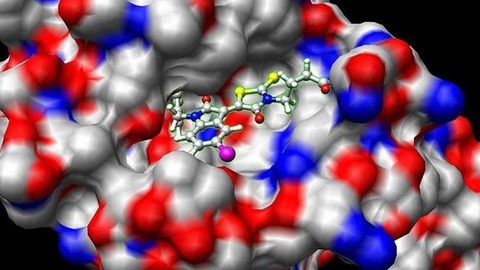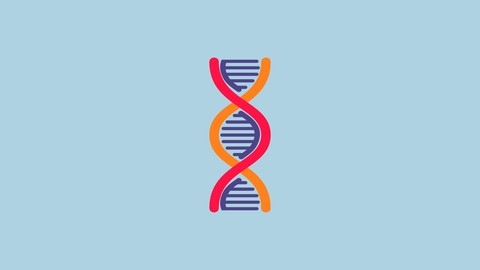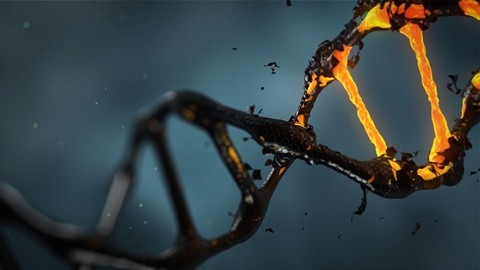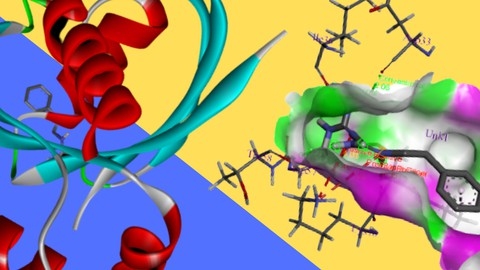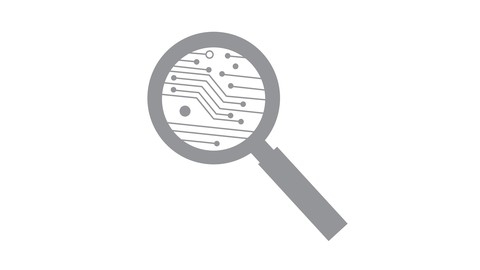Bioinformatics is a fascinating field that sits at the intersection of biology, computer science, and statistics.
By leveraging computational tools and techniques, bioinformaticians unlock the secrets hidden within vast biological datasets, leading to groundbreaking discoveries in areas like medicine, agriculture, and environmental science.
Learning bioinformatics can empower you to analyze genomes, identify disease-causing mutations, develop new drugs, and contribute to advancements in personalized medicine.
It’s a rapidly evolving field with immense potential for those with the right skills.
With the growing demand for bioinformaticians, finding the right course to kickstart your journey can be overwhelming.
You’re looking for a program that provides a solid foundation in the core concepts, offers hands-on experience with industry-standard tools, and is taught by experienced professionals who can guide you through the complexities of this interdisciplinary field.
After carefully reviewing numerous courses, we’ve identified Genetics and Next Generation Sequencing for Bioinformatics as the best overall bioinformatics course on Udemy.
This comprehensive course delves into the intricacies of genetics and next-generation sequencing, providing a solid foundation in the analysis of genomic data.
It covers essential topics like DNA structure, genetic variation, NGS technologies, and variant identification, equipping you with the knowledge and skills needed to analyze real-world datasets.
While this is our top pick, there are several other excellent bioinformatics courses available on Udemy, catering to various learning styles and specific areas of interest.
Keep reading to explore our curated list of recommendations and find the perfect course to launch your bioinformatics journey.
Genetics and Next Generation Sequencing for Bioinformatics
This course on Genetics and Next Generation Sequencing for Bioinformatics thoroughly explores the intriguing connection between genetics and cutting-edge sequencing technology.
You delve into the basic building blocks of life, discovering the structure of DNA and how its code directs the creation of proteins.
You then uncover the captivating world of genetic diversity, learning how variations in our DNA arise and are passed down through generations, covering concepts like dominant and recessive alleles, codominance, incomplete dominance, and linked inheritance.
The course then shifts gears to introduce you to the revolutionary world of Next Generation Sequencing (NGS).
You learn how NGS has transformed the field of genetics by comparing it to the traditional Sanger Sequencing method.
You explore the intricate process of preparing DNA libraries for sequencing, understanding the crucial role that adapters play.
You gain a solid understanding of different sequencing types, including paired-end reads, and become familiar with the complexities of analyzing the massive datasets generated by NGS.
The course also delves into the identification of genetic variants, particularly focusing on somatic variants that contribute to diseases like cancer.
You even gain practical experience by diving into a hands-on project using Galaxy, a powerful bioinformatics analysis platform.
You learn how to access and work with publicly available data in the FastQ format, a standard format for storing NGS data.
You then explore quality control measures and data improvement techniques using tools like FastQC and Trimmomatic.
Through this project, you apply your knowledge to real-world scenarios, acquiring the skills to analyze genetic data and contribute to exciting advancements in bioinformatics.
Learn Bioinformatics From Scratch (Theory & Practical)
This bioinformatics course starts you off by building a strong foundation in biological databases, including the NCBI Nucleotide Database and the Protein Databank.
You quickly progress to the essential skill of sequence alignment, learning techniques like the Dot Matrix Algorithm and Dynamic Programming.
You will even become proficient in using industry-standard tools like EMBOSS and BLAST to compare and analyze DNA and protein sequences.
The course then takes you deeper into the world of genomics, teaching you how to decipher the secrets hidden within DNA.
You learn about gene prediction algorithms like the Markov Model and apply them to predict genes in various organisms.
You then shift gears to the fascinating realm of structural bioinformatics, where you uncover the intricate three-dimensional world of proteins.
You learn to visualize protein structures using Pymol and explore cutting-edge methods like Alpha-Fold, a game-changer in protein structure prediction.
Finally, you explore evolutionary bioinformatics, learning how organisms are related through time.
You discover how to build phylogenetic trees using methods like CLUSTAL-W and T-COFFEE, powerful tools that reveal evolutionary links between organisms.
This course equips you with a robust understanding of bioinformatics, from fundamental concepts to sophisticated analyses, transforming you into a capable bioinformatician.
Bioinformatics; Learn Docking & Mol Dynamics Simulation
This bioinformatics course takes you on a deep dive into molecular dynamics simulations and protein-ligand docking, giving you practical skills for analyzing protein structures and potentially even designing new drugs.
You begin with the fundamentals of protein structure, learning how to obtain and visualize 3D protein structures.
You’ll become familiar with tools like Pymol and the Protein Databank.
You then delve into the theory behind molecular dynamics simulations, exploring the different steps involved and the software used – like GROMACS – to run simulations.
You’ll even learn about the Linux operating system, which is essential for performing these simulations.
Next, you’ll gain hands-on experience by simulating a protein in water using GROMACS.
You’ll learn how to prepare the protein structure, create a topology file, and run various phases of the simulation, including energy minimization, equilibration, and production.
You’ll analyze the resulting data using tools like RMSD, RMSF, and Radius of Gyration to gain insights into the protein’s dynamics.
You’ll then transition to molecular docking, learning the fundamentals of how proteins and ligands interact and utilizing software like Vina and AutoDock4 to perform docking simulations.
You’ll also learn about important concepts like active site prediction and grid setup, which are critical for achieving accurate docking results.
Finally, you’ll be introduced to virtual screening, a powerful technique that uses MD simulations to search for potential drug candidates.
This includes learning about Open Babel and its use in drug discovery.
Learn Bioinformatics in 6 Days
This six-day bioinformatics course covers everything from the basics to more advanced concepts.
You will begin with the history of bioinformatics, exploring how the field developed, and learn about the central dogma of molecular biology.
This concept explains how DNA provides instructions for building and maintaining cells.
You will then transition into an introduction to protein structures, which are essential for understanding how proteins function.
You will then dive into the world of bioinformatics databases, including GenBank and UniProt.
These databases contain a wealth of information about DNA and protein sequences.
You will learn how to navigate and effectively search these databases for valuable information.
You will also learn how to build a simple database using Microsoft Access, a widely-used database management system.
The course then explores sequence alignment, a fundamental technique used to identify similarities and differences in DNA, RNA, or protein sequences.
You will gain practical experience using ClustalX, a popular software package for multiple sequence alignment.
You will also learn about BLAST programs and how to use BLASTn to search the NCBI database for similar sequences.
Understanding these programs is critical for many bioinformatics analyses.
You will then learn how to use molecular phylogenetics to study evolutionary relationships between different organisms.
This will include learning how to interpret phylogenetic trees and how to use different methods to build your own trees, using the software UGENE.
Finally, you will explore the field of genomics, learning about different sequencing technologies and how scientists assemble and annotate genomes.
This will provide a solid understanding of how researchers analyze and compare genomes to understand their function and evolution.
Bioinformatics: Guide to RNA-seq with No Coding Required!
This course equips you with the skills to analyze RNA sequencing data using powerful bioinformatics tools, all without writing a single line of code.
You will begin by obtaining raw RNA sequencing data and uploading it to Galaxy, a user-friendly platform designed for bioinformatics analysis.
You will learn to use FastQC and MultiQC to perform quality control, ensuring your data is reliable.
Then, you will align your sequencing reads to a reference genome using tools like FeatureCounts and Infer Experiment, allowing you to identify the genes being expressed.
The course then delves into differential gene expression analysis using DESeq2.
You will learn how to pinpoint genes with different expression levels between experimental groups, revealing valuable insights into biological processes.
You will also learn to use GOseq and KEGG Pathview, which help you understand the functions and pathways associated with these differentially expressed genes.
Taking you beyond the basics, the course introduces DEGUST, a powerful tool for differential gene expression analysis that doesn’t require Galaxy.
DEGUST empowers you with a hands-on approach to analyze your data and interpret the many graphs it produces, deepening your understanding of the results.
Basics of Bioinformatics research - from idea to article
This course guides you through every step of a bioinformatics research project, from forming your initial research question to publishing your results.
You begin by learning how to find and prepare data, a crucial skill for any bioinformatician.
You then explore the exciting world of data analysis, learning how to find patterns and meaning in the data using statistical techniques and tools like Venn diagrams.
A key focus is identifying differentially expressed genes, which hold the key to understanding changes in biological processes.
You then delve into protein-protein interaction networks, learning to identify “hub genes” – the stars of these networks – using tools like STRING and Cytoscape.
You uncover potential drug targets by navigating the Drug gene interaction database (DGIdb) and visualize these molecules in 3D using Chem Sketch.
You learn to screen and evaluate potential drugs using sophisticated software like DruLiTo and OSIRIS.
The course then dives into the intricate world of molecular docking, teaching you to use powerful tools like UCSF Chimera and AutoDock Vina.
You explore the intricacies of protein and ligand preparation, learn to identify potential drug binding pockets using fpocket, and master the art of visualizing these interactions.
You also discover how to use enrichment analysis techniques with Enrichr and miRNet to gain deeper insights from your data.
Finally, you learn the art of scientific communication, mastering the structure of a research paper and understanding how to select the right journal for your work.
You become adept at using reference management tools like Zotero and explore the benefits of pre-publishing your work on platforms like BioRxiv.
Bioinformatics Mastery: Immunoinformatics
This course takes you on a journey into the world of bioinformatics, specifically focusing on how it’s used to understand and manipulate the immune system to develop new vaccines.
You start with the fundamentals of immunology, learning how your body naturally fights off infections.
You then dive into the exciting world of vaccine design, particularly reverse vaccinology, a cutting-edge approach where you use computer algorithms to design vaccines from scratch.
You learn how to analyze the structure and function of antigenic proteins, the very molecules that trigger an immune response.
You learn how to predict their allergenicity, their 3D structures, and most importantly, the regions called epitopes that antibodies recognize and bind to.
This knowledge is crucial for designing effective vaccines that can precisely target pathogens.
The course delves deeper into the prediction of B-cell epitopes and cytotoxic T cell epitopes, key players in our adaptive immune response.
You learn how to predict which regions of an antigen will bind to these epitopes and how this binding affects the immune response.
This includes predicting the binding to MHC class I and MHC class II molecules, essential for T cell activation and the destruction of infected cells.
Finally, you explore the world of antigen and antibody modeling and docking.
This involves creating computer models of antigens and antibodies and then simulating their interactions.
This allows for the prediction of a vaccine candidate’s effectiveness even before it’s tested in a lab.
This complex process gives you a glimpse into the power of bioinformatics in developing new vaccines and combating infectious diseases.
Unix essentials for NGS bioinformatics
This course takes you on a journey into the world of Unix, a powerful tool that’s essential for handling the massive datasets generated by Next-Generation Sequencing (NGS) in bioinformatics.
You begin with the basics, learning how to navigate the Unix environment.
Think of it like learning your way around a new city – you’ll master commands like pwd (knowing where you are) and ls (seeing what’s around you).
You’ll also discover how to create directories (like building your own workspace) using mkdir and manage files using commands like cp and mv.
The course then equips you with powerful tools like grep, sort, and uniq to search, sort, and sift through data.
Imagine being able to find a needle in a haystack – that’s the kind of efficiency you’ll gain!
You’ll delve into the world of NGS data, learning how to download, extract, and transform common formats like FastQ and Fasta.
You will even learn how to write scripts, which are like step-by-step instructions for the computer, using commands like sed and tr to manipulate text and awk to perform sophisticated data analysis.
As you progress, you’ll become proficient in automating repetitive tasks, streamlining your workflow.
The course culminates with you being able to build bioinformatics pipelines – think of these as automated workflows that process data – making you adept at handling real-world bioinformatics challenges.
You’ll transition from a novice to someone who can confidently manipulate NGS data, write scripts, and build automated pipelines, becoming a valuable asset in any NGS research lab.
Also check our posts on:



